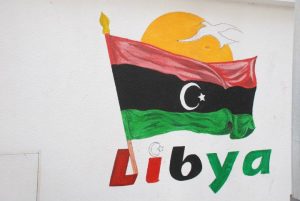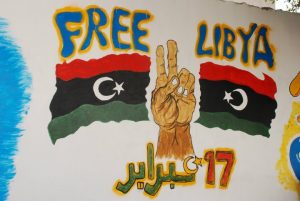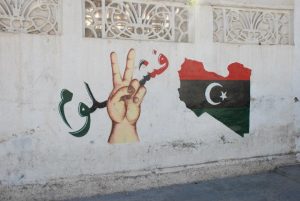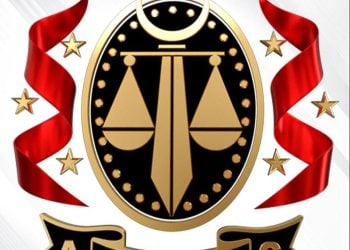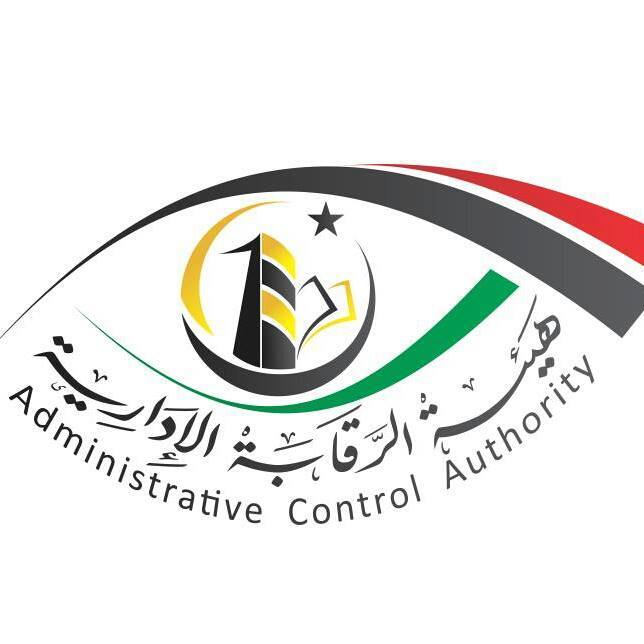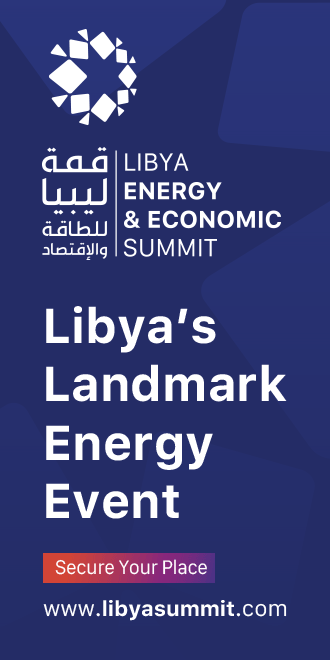By Sami Zaptia.

London, 17 February 2021:
New freedom of expression
In publishing these 2011 17 February Revolution graffiti/murals, it is worth recalling that up to the Revolution, Libyan media output had been very tightly controlled by the authoritarian Qaddafi regime.
All media in Libya had been state owned/controlled. There was no free and open public debate, and certainly no criticism of Qaddafi, his family or his regime.
Under Qaddafi, there was much use of murals, but these were state controlled and initiated, exalting the ”Leader”, his First of September Revolution and their achievements. It was not a medium for free public expression or regime criticism.
Libya’s opposition had long fled abroad. And even then, many had been hunted down abroad as ‘‘stray dogs’’ and assassinated by Qaddafi’s henchmen.
Saif-Al-Islam’s ‘‘Libya Tomorrow’’ (Libya Al-Ghad) manufactured ”free” press
Under huge pressure by the international community, as part of post Lockerbie and the agreement to get rid of all of its chemical and biological stocks, the Qaddafi regime had started to implement cosmetic reforms.
These included Saif-Al-Islam Qaddafi’s ‘‘Libya Al-Ghad’’ ‘‘reform’’ movement and its 2007 Al-Ghad Media Group. The Al-Ghad TV and newspapers initiated some unprecedented criticism of public officials, corruption, and mismanagement by the ‘‘bureaucrats’’ and ‘‘fat cats’’ – but never of Qaddafi, his family and the First of September Revolution. These, Saif said in a famous speech, were ‘‘red lines’’. Indeed. Qaddafi was such a red line that a draft constitution began circulating at the time where Qaddafi’s role as the leader and guide of the revolution was guaranteed.
The draft constitution never made it to general public debate and the Saif reforms came to a crashing hault. The so-called ‘‘companions’’ of Qaddafi and his revolution – the diehard supporters and Revolutionary Guards – objected to Saif’s economic reforms which they argued, at a famous behind-closed-doors meeting, would lead to inevitable political reforms. Qaddafi came down on their side. Saif was effectively side-lined and his media group had to flee Libya attempting to set up operations abroad.
The failure by Qaddafi to see that allowing some real reforms and freedoms to the emerging and majority youth demographic was necessary and not optional, contributed to the advent of the 2011 revolution.
The 17 February 2011 Revolution graffiti and murals
The graffiti and murals on the public walls of Tripoli during the Revolution of 17 February 2011 captured the mood of the time. It was a time when the population united and focused against its one common enemy: Qaddafi and his regime.
An explosion of free media
They also foreshadowed the subsequent explosion of independent Libyan media post the revolution in the form of hundreds of newspapers, radio and TV stations. The overwhelming majority of these have long disappeared under market realities.
Unified international support for the revolution?
The public art also reflected a time when the foreign states that supported the revolution were held in high regard by all Libyans supporting the revolution: Qatar, France, Turkey, the UAE and NATO. They were perceived by Libyans to be supporting all Libyans and pushing in the same direction – for an independent, unified democratic Libya. This was reflected in some of the murals with their flags. As time went on, it became clear that different states had different agendas and perceptions of what Libya’s revolution was about and for. Many if not most internationals were interested more in getting rid of Qaddafi rather than establishing a democratic state.
Unifying themes
The graffiti concentrated on unifying themes: responding to Qaddafi’s insult of calling the revolutionaries rats by depicting him as the rat and on the rubbish heap of history. The graffiti sought to break the psychological glass ceiling of fear by publicly and openly depicting Qaddafi in negative light – something impossible prior to 17 February 2011.
There was also a common unifying use of the three colours of the 24 December 1951 independence flag that Qaddafi had discarded on his 1 September 1969 coup against King Idris I.
The father of the Libyan anti-colonial struggle, Omar Mokhtar, was also a common unifying symbol running through many of the graffiti.
It is just as well photos by the source of these graffiti were taken at the time as, unfortunately from a historical perspective, many have been painted over in the intervening ten years.
Inciteful and un-conciliatory?
Some readers may feel that republishing some of the graffiti depicting Qaddafi in very humiliating light could be seen as inciteful and un-conciliatory at the very time when Libya and Libyans are trying desperately to heal old wounds and wrap around a newly selected Government of National Unity. Libya is also planning to hold elections on 24 December 2021.
There is a case for such a view. However, it is the tenth anniversary of the historical February Revolution that overthrew the 42-year-old Qaddafi regime, and these graffiti were a historical fact depicting popular sentiment at the time. Many of the photos are date stamped and they represent a very important historical record in drawings rather than in words.
They are also a reminder that for 42 years under the Qaddafi regime, such expression of criticism were strictly forbidden and almost certainly punished by imprisonment or worse.
The 100-plus graffiti/murals are being published over three days.





